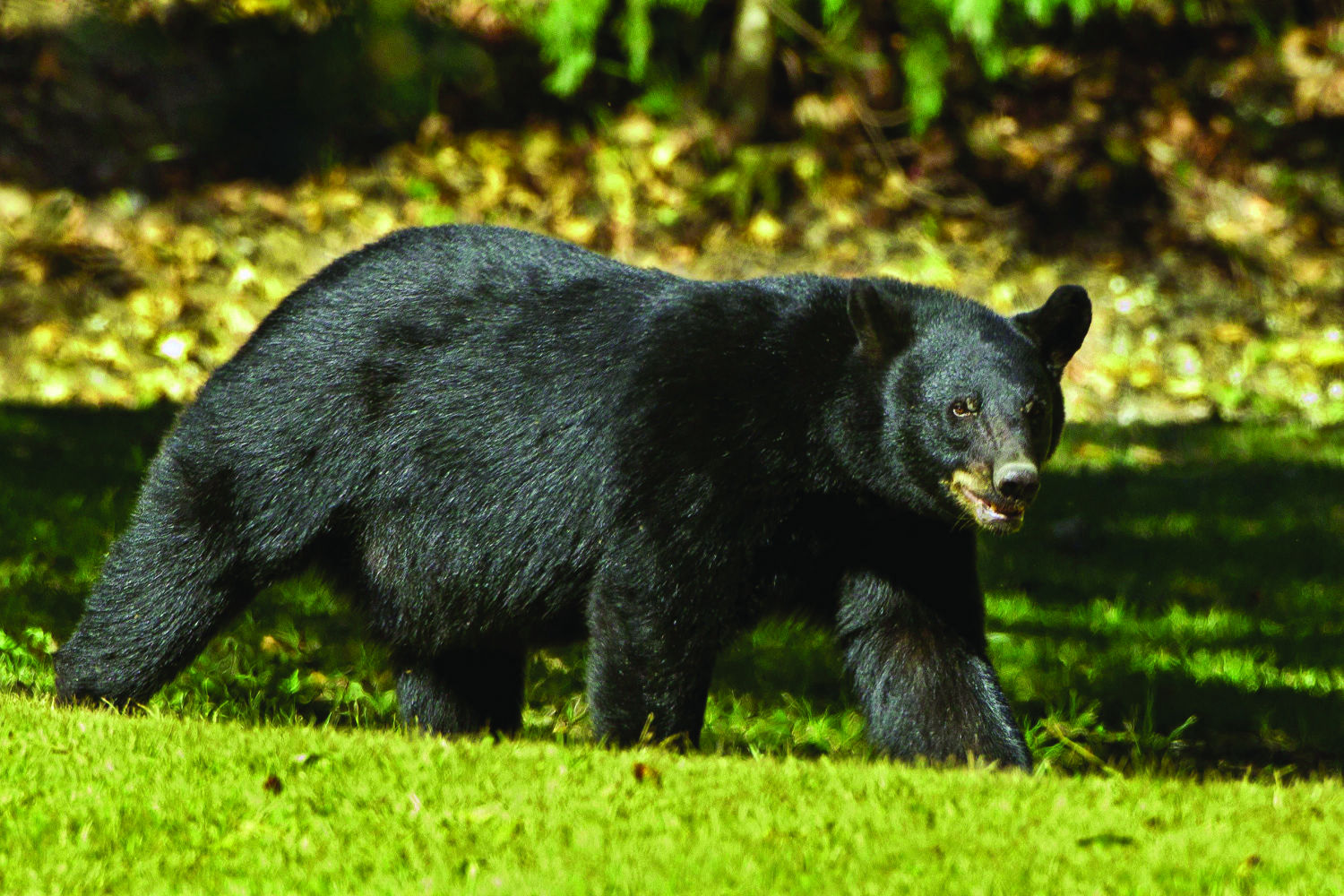
Skains leaving Tarpons for Cecilia
April 5, 2016
Annette Charpentier
April 7, 2016A close encounter of the ursine kind has left a Houma physician and his wife a little more cautious about how their trash is stowed and has wildlife officials wondering how far east Louisiana black bears have pushed in their quest for territory.
It all started last Wednesday night, when Dr. Eric Jukes and his wife, Nathalie, found some trash strewn about in a side yard of their home on the Lancaster Street Extension. That’s in the rear of the Summerfield subdivision, near the place where St. Charles Street meets the Southdown-Mandalay Road.
“We had trash that was in the side yard between my neighbor’s house and mine, there was a trash bag out there,” Dr. Jukes said. “I jokingly said it’s probably a bear.”
The Jukes family went to the video tape – or the moving digital image, to be accurate – and learned that a joking comment was rooted in fact.
“At 1:09 in the morning the bear is coming across the driveway, he walks back across the driveway,” Dr. Jukes said. “At 3:38, he knocked over the can and came back and stole one trash bag and went into the side yard. There was trash all over the yard. My wife saw tracks during the day.”
Dr. Jukes notified the Louisiana Department of Wildlife and Fisheries, which sent a team out to investigate.
The appearance of the Southdown-Mandalay bear came within weeks of an announcement by state and federal wildlife officials that the Louisiana black bear is considered a recovered species. The U.S. Fish and Wildlife Service is in the final stages of removing the critters from the list of those protected by the federal Endangered Species Act.
No matter what course the feds eventually take, however, black bears are still protected under state law. Criminal penalties for killing them include a fee of $10,000 for each bear taken.
Maria Davidson, who heads up LDWF’s large carnivore management division, says that errant bears such as the one that visited the Jukes’ home do not generally pose a threat to people, noting that “given the opportunity they will go the other way.” But caution is advised, and now more than ever the securing of trash cans is a must.
“You would want to give them the space they deserve,” Davidson said, stating emphatically that any attempts to attract or feed bears is bad for people and bears alike.
The bears, she said, tend to find that trash generated by humans has a favorably high calorie content; discarded crawfish shells and shrimp heads also are rich in fat, and can thus easily satisfy their cravings for it in their diets.
One man’s trash is a gold mine for bears, and easily accessed trash can result in multiple visits. Pet food left outside will also attract bears.
Davidson said the range of black bears has expanded to areas closer to Terrebonne, from St. Mary Parish where they are far more common.
The Southdown-Mandalay bear, Davidson said, is likely a solitary young male, not yet of breeding age, just making its way in the world and foraging for food. When the time comes for it to breed, she said, the bear will likely return to areas with larger bear populations in order to secure a mate.
Male black bears can grow to weights of 300 to 400 pounds, and females from 150 to 250 pounds, Davidson said. In 2013 some St. Mary Parish neighborhoods endured a spate of nuisance bears. State wildlife officers set humane traps for bears that resulted in deportation to less populated areas. LDWF also distributed special garbage can locks and increased humane traps in the area, near Patterson.
In late March, LDWF Secretary Charlie Melancon praised more than a decade of efforts to bring black bears back, calling the comeback of small colonies a great success story.
“The Louisiana black bear joins a distinguished recovery list, which includes the American alligator, the bald eagle and the brown pelican,” Melancon said. “We will work toward making sure the black bear’s renaissance continues.’’
The Louisiana black bear is a subspecies of black bear unique to Louisiana, western Mississippi and eastern Texas according to LDWF, which notes that in 1902 it was a Louisiana black bear that caught the imagination of President Theodore Roosevelt, and eventual popularity of what came to be known as the “Teddy Bear.” •
Dr. Eric Jukes and wife Nathalie had an unexpected visitor at their home near Southdown-Mandalay Road in Houma. The Louisiana black bear rifled through their trash and then left.










